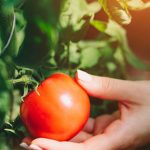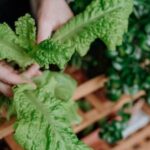Are you interested in starting a vegetable garden but don’t have the space for a traditional garden bed? Look no further than the world of container gardening. In this article, we will explore the various types of containers for vegetable gardening and how they can benefit both novice and experienced gardeners alike. From choosing the right size and material to creative container options, we will delve into everything you need to know to get started.
When it comes to types of containers for vegetable gardening, there is a wide range of options available. Whether you have limited outdoor space or simply want the convenience of tending to your plants on a patio or balcony, container gardening is a fantastic alternative. Not only does it provide flexibility in terms of location, but it also allows for better control over factors such as soil quality and drainage.
In addition to practical benefits, container gardening offers opportunities for creativity and personalization. From self-watering containers to upcycled DIY options, there are endless possibilities for designing and organizing your vegetable garden. Join us on this exploration as we uncover the benefits and versatility of growing healthy, delicious vegetables in containers.
Choosing the Right Size and Material for Your Containers
When it comes to choosing the right size and material for your containers for vegetable gardening, there are several factors to consider in order to ensure the success of your garden. The size of your containers will ultimately depend on the type of vegetables you plan to grow, as well as the space available for your garden. Larger vegetables such as tomatoes or peppers will require larger containers, while smaller herbs can thrive in smaller pots.
In addition to size, it’s important to consider the material of your containers. Common materials for containers include plastic, ceramic, terracotta, metal, and wood. Each material has its own advantages and drawbacks. For example, plastic containers are lightweight and affordable, but may not be as aesthetically pleasing as ceramic or terracotta pots. On the other hand, wooden containers are attractive and provide good insulation for plant roots, but may degrade over time due to moisture exposure.
When choosing the right size and material for your containers, it’s also crucial to consider the drainage needs of your plants. Proper drainage is essential for preventing waterlogged soil, which can lead to root rot and other issues. Consider opting for containers with drainage holes or employing pot feet to elevate your containers off the ground for better airflow.
Overall, selecting the right size and material for your containers is a key aspect of successful vegetable gardening. By considering the specific needs of your plants and the conditions in which they will be growing, you can ensure that your container garden thrives and yields a bountiful harvest.
Creative Container Options
When it comes to vegetable gardening in containers, the options are vast and varied. From traditional pots to raised beds, there are many creative container options to explore for growing your favorite vegetables. Each type of container offers its own set of advantages and considerations, allowing you to customize your gardening experience based on your available space, climate, and personal preferences.
Traditional Pots
Traditional pots are a classic choice for container gardening. They come in various sizes, shapes, and materials, offering flexibility for different types of vegetables. Clay pots are a popular option for their aesthetic appeal and breathability, while plastic pots are lightweight and budget-friendly. When choosing traditional pots for vegetable gardening, consider the size of the plant at maturity, the root depth needed, and proper drainage to ensure healthy plant growth.
Raised Beds
Raised beds are another creative option for growing vegetables in containers. These elevated garden boxes offer several benefits such as better soil drainage, improved accessibility for tending to plants, and the ability to control soil quality. Raised beds can be constructed from wood, metal, or composite materials, providing durability and customizable sizing to fit your gardening needs. They also offer a solution for gardening in limited spaces or areas with poor soil quality.
Hanging Containers
For those with limited space or seeking unique design options, hanging containers provide an innovative solution for vegetable gardening. Hanging baskets or vertical planters can be used to grow trailing vegetables like cherry tomatoes or vine plants such as cucumbers. Utilizing overhead space not only adds visual interest but also maximizes the use of available sunlight for optimal plant growth.
Exploring these creative container options allows you to design a vegetable garden tailored to your specific needs and preferences. Whether you opt for traditional pots, raised beds, or hanging containers, each choice presents an opportunity to cultivate a thriving garden filled with delicious homegrown vegetables.
Exploring Self-Watering Containers for Low-Maintenance Gardening
When it comes to vegetable gardening, one of the biggest challenges for many people is finding the time to consistently water their plants. This is where self-watering containers come in handy. These innovative containers are designed to provide a constant water supply to your plants, reducing the need for frequent watering and making it easier to maintain a healthy garden.
Self-watering containers typically consist of a reservoir at the bottom that holds water and a wicking system that draws water up into the soil as needed. This ensures that your plants have access to moisture at all times, promoting steady growth and minimizing the risk of drying out during hot weather.
Additionally, these containers can help prevent overwatering, as they provide a built-in drainage system that allows excess water to escape, preventing root rot and other issues caused by waterlogged soil.
There are several types of self-watering containers available, ranging from traditional plastic pots with built-in reservoirs to DIY options made from repurposed materials. Some popular choices include self-watering planters, raised beds with built-in watering systems, and even hanging baskets with self-watering features. Regardless of the specific type you choose, these containers can be a game-changer for anyone looking to simplify their gardening routine while still enjoying bountiful harvests.
| Container Type | Features |
|---|---|
| Self-Watering Planter | Built-in reservoir and wicking system for consistent moisture |
| Raised Bed with Watering System | Spigots or hoses for easy irrigation and moisture control |
| Hanging Basket with Self-Watering Feature | Internal mechanism for maintaining proper hydration levels |
Overall, self-watering containers offer an excellent solution for busy gardeners or those looking for a low-maintenance approach to vegetable gardening. With the right container choice and setup, you can enjoy healthy, vibrant plants without constantly worrying about watering schedules.
The Best Containers for Specific Vegetables
When it comes to growing specific vegetables in containers, it’s important to choose the right type of container to ensure the best growth and yield. Different vegetables have different requirements, so it’s essential to consider the size, material, and depth of the container. Here are some of the best types of containers for specific vegetables:
1. Tomatoes: Tomatoes are one of the most popular vegetables to grow in containers. For best results, choose a large pot with a minimum diameter of 18 inches to allow room for the roots to spread. Additionally, opt for a sturdy material such as plastic or glazed ceramic to provide support for the tall tomato plants.
2. Peppers: Peppers thrive in containers that are at least 12 inches deep and have good drainage. Look for pots made from materials like terracotta or fabric that allow air circulation to the roots. A 5-gallon container is usually sufficient for growing one pepper plant.
3. Herbs: Herbs such as basil, cilantro, and mint are perfect for container gardening. Choose small to medium-sized pots with good drainage and fill them with well-draining potting mix. Consider grouping similar herbs together in a single large container for an attractive display.
4. Root Vegetables: For root vegetables like carrots and radishes, select deep containers that are at least 12 inches deep to accommodate their long taproots. Opt for lightweight containers such as fabric grow bags or wooden crates that provide ample space for underground growth.
By selecting the right type of container for specific vegetables, you can create an optimal environment for their growth and enhance your overall gardening experience. Whether you’re growing tomatoes, peppers, herbs, or root vegetables, choosing the appropriate container will contribute significantly to the success of your vegetable garden.
Container Garden Design
When it comes to designing your vegetable garden in containers, there are several important factors to consider. First, think about the specific types of vegetables you want to grow and how much space they will need. For example, sprawling plants like tomatoes will require larger, deeper containers, while smaller herbs can thrive in more compact pots.
Another important consideration is the layout of your container garden. Be mindful of the placement of each plant to ensure they have enough room to grow without overcrowding each other. You may also want to consider grouping plants with similar water and sunlight needs together to make maintenance easier.
In terms of aesthetics, don’t be afraid to get creative with your container garden design. Consider adding vertical elements such as trellises or stakes for climbing plants, or mix different types and sizes of containers for visual interest. You can also explore color coordination by choosing containers that complement the colors of your vegetables or herbs.
Finally, don’t forget about practical considerations such as accessibility for watering and maintenance. Make sure your containers are easily reachable and consider incorporating a drip irrigation system if you have a large number of plants. With careful planning and attention to detail, you can create a beautiful and productive container garden that will provide you with fresh vegetables all season long.
| Aspect | Tips for Arranging and Organizing Your Plants |
|---|---|
| Size | Consider the specific types of vegetables and their space requirements when choosing container sizes. |
| Layout | Mindfully place each plant to avoid overcrowding and group plants with similar needs together. |
| Aesthetics | Get creative with vertical elements, mix different container types/sizes, and consider color coordination. |
DIY Container Options
When it comes to eco-friendly gardening, using DIY container options by upcycling and repurposing materials can be a great way to reduce waste and give new life to old items. Not only does this approach help the environment, but it also adds a unique and creative touch to your vegetable garden. There are various everyday items that can be transformed into containers for vegetable gardening, allowing you to personalize your garden while being sustainable.
Here are some DIY container options for eco-friendly gardening:
- Upcycled Wooden Crates: Old wooden crates can be given a new lease on life by turning them into raised beds or large containers for growing vegetables. They can add a rustic and charming aesthetic to your garden.
- Repurposed Plastic Barrels: Cut in half, plastic barrels can serve as deep containers for root vegetables or larger plants like tomatoes. With proper drainage holes added, these barrels can be an affordable and durable option for your garden.
- Mason Jars and Tin Cans: Small herbs or compact salad greens are perfect for planting in repurposed mason jars or tin cans. These items are often readily available and can add a whimsical touch to your garden.
By choosing DIY container options through upcycling and repurposing, you not only reduce waste but also have the opportunity to get creative with your vegetable garden. This environmentally friendly approach allows you to showcase your unique style while positively contributing to the health of the planet. Whether it’s turning an old item into a planter or repurposing materials for raised beds, there are endless possibilities for creating eco-friendly containers for vegetable gardening.
Container Garden Maintenance
Container gardening offers a convenient and flexible way to grow vegetables, and proper maintenance is essential for success. In this section, we will explore the best practices for watering, fertilizing, and pest control to keep your container garden healthy and thriving.
Watering Your Container Garden
When it comes to watering your container garden, it’s important to strike the right balance. Overwatering can lead to root rot and other issues, while underwatering can result in wilted and unhealthy plants. The type of container you choose will also impact how often you need to water your plants.
Porous materials like terracotta will dry out faster than plastic or metal containers. It’s best to check the soil moisture regularly by sticking your finger into the soil. If it feels dry an inch below the surface, it’s time to water.
Fertilizing Your Vegetables
Container-grown vegetables may require more frequent fertilization compared to those grown in traditional garden beds. As plants use up nutrients in the soil, it’s important to replenish them with a balanced fertilizer. Look for a formula designed specifically for vegetables and follow the instructions on the packaging.
Consider using a slow-release fertilizer for a steady supply of nutrients over time. Be mindful not to over-fertilize your plants, as this can lead to excessive foliage growth at the expense of fruit production.
Pest Control in Container Gardens
Pests can be a challenge for any type of gardening, but container gardens are not immune. Keep an eye out for common pests like aphids, spider mites, and caterpillars which can damage your vegetable plants. Regularly inspect your plants for signs of pest infestations and take action promptly if you notice any issues. You can use natural remedies like neem oil or insecticidal soap to control pests without harming beneficial insects or interfering with pollination.
By implementing these maintenance practices, you can ensure that your container garden remains healthy and productive throughout the growing season.
Conclusion
In conclusion, the versatility of container gardening offers numerous benefits for individuals looking to grow their own healthy and delicious vegetables. From small outdoor spaces to indoor environments, vegetable gardening in containers allows for flexibility and creativity in planting options. Whether it’s traditional pots, self-watering containers, or creative DIY upcycled options, there are various types of containers for vegetable gardening that cater to different preferences and needs.
Furthermore, by choosing the right size and material for your containers, you can ensure the optimal growth of your vegetables. This includes considering specific container options for particular vegetables such as tomatoes, peppers, herbs, and more. Additionally, arranging and organizing your plants in a visually appealing manner can contribute to an aesthetically pleasing container garden design.
Lastly, embracing container gardening also involves regular maintenance such as watering, fertilizing, and pest control. By considering these aspects and exploring the various container options available, individuals can discover the joy of growing their own fresh produce regardless of space limitations. Ultimately, the adaptability and convenience of vegetable gardening in containers make it a rewarding experience for both experienced gardeners and beginners alike.
Frequently Asked Questions
What Is the Best Type of Container to Grow Vegetables In?
The best type of container to grow vegetables in is a large, sturdy one that allows for proper drainage. Containers made of plastic, wood, or ceramic are all suitable options. Make sure the container is at least 12 inches deep to accommodate the vegetable’s roots.
What Pots to Use for Vegetable Garden?
When it comes to choosing pots for a vegetable garden, it’s important to consider the size and material of the pot. Look for pots that are large enough for the specific vegetable you want to grow and make sure they have proper drainage holes. Terracotta pots are a popular choice due to their breathability and sturdiness.
What Are the Different Types of Vegetable Pots?
Different types of vegetable pots include plastic containers, fabric grow bags, terracotta pots, and wooden boxes. Plastic containers are lightweight and durable, while fabric grow bags provide excellent drainage and air circulation.
Terracotta pots are breathable, and wooden boxes offer a rustic aesthetic while providing ample space for root growth. Each type has its own advantages depending on the specific needs of the vegetables being grown.

If you’re looking to get into vegetable gardening, or are just looking for some tips on how to make your current garden better, then you’ve come to the right place! My name is Ethel and I have been gardening for years. In this blog, I’m going to share with you some of my best tips on how to create a successful vegetable garden.





